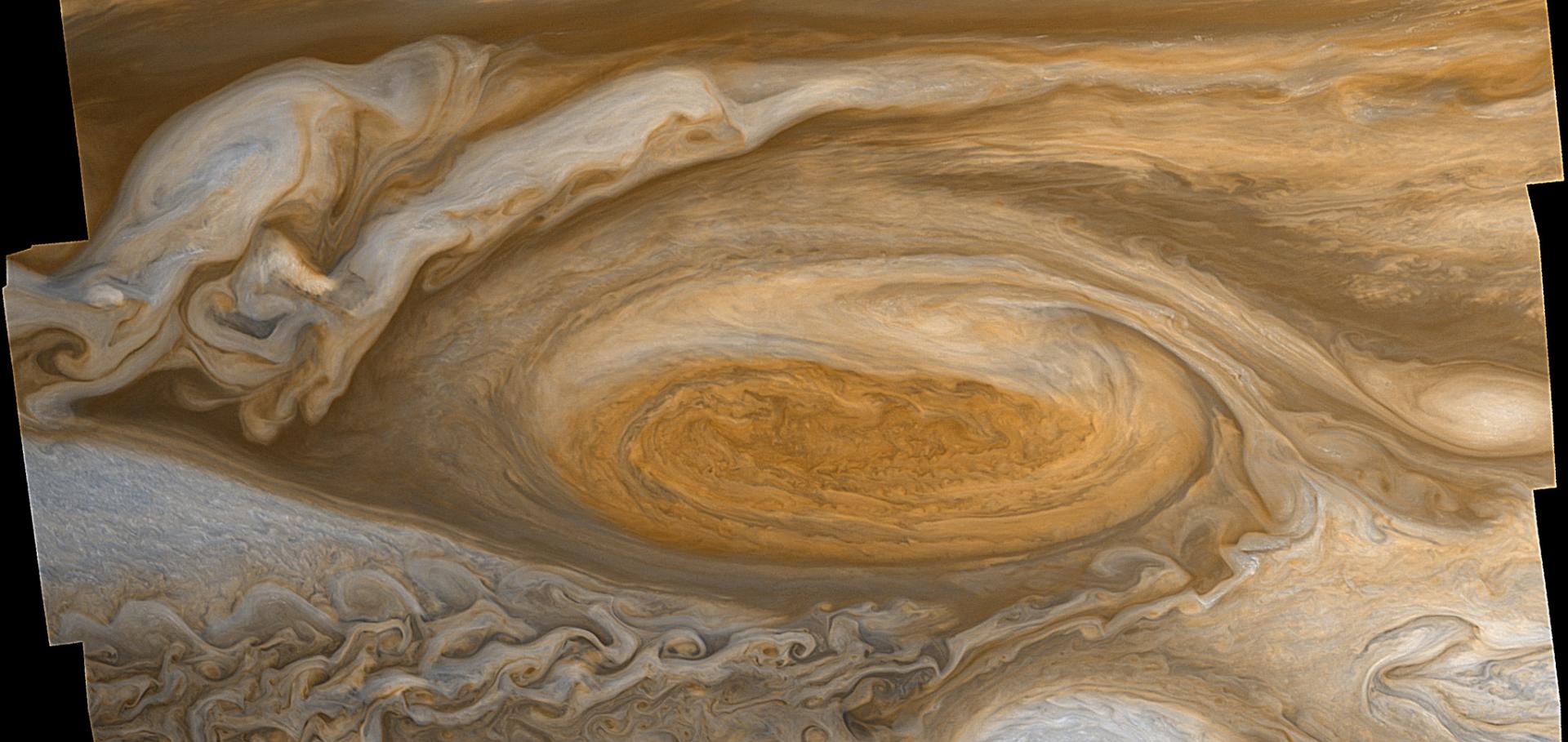A hexagon in Saturn’s northern stratosphere surrounding the emerging summertime polar vortex
Nature Communications Springer Nature 9 (2018) 3564
Abstract:
Saturn’s polar stratosphere exhibits the seasonal growth and dissipation of broad, warm vortices poleward of ~75° latitude, which are strongest in the summer and absent in winter. The longevity of the exploration of the Saturn system by Cassini allows the use of infrared spectroscopy to trace the formation of the North Polar Stratospheric Vortex (NPSV), a region of enhanced temperatures and elevated hydrocarbon abundances at millibar pressures. We constrain the timescales of stratospheric vortex formation and dissipation in both hemispheres. Although the NPSV formed during late northern spring, by the end of Cassini’s reconnaissance (shortly after northern summer solstice), it still did not display the contrasts in temperature and composition that were evident at the south pole during southern summer. The newly formed NPSV was bounded by a strengthening stratospheric thermal gradient near 78°N. The emergent boundary was hexagonal, suggesting that the Rossby wave responsible for Saturn’s long-lived polar hexagon—which was previously expected to be trapped in the troposphere—can influence the stratospheric temperatures some 300 km above Saturn’s clouds.Comparative terrestrial atmospheric circulation regimes in simplified global circulation models. Part I: From cyclostrophic super‐rotation to geostrophic turbulence
Quarterly Journal of the Royal Meteorological Society Wiley 144:717 (2018) 2537-2557
Abstract:
The regimes of possible global atmospheric circulation patterns in an Earth‐like atmosphere are explored using a simplified Global Circulation Model (GCM) based on the University of Hamburg's Portable University Model for the Atmosphere (PUMA)—with simplified (linear) boundary‐layer friction, a Newtonian cooling scheme, and dry convective adjustment (designated here as PUMA‐S). A series of controlled experiments is conducted by varying planetary rotation rate and imposed equator‐to‐pole temperature difference. These defining parameters are combined further with each other into dimensionless forms to establish a parameter space in which the occurrences of different circulation regimes are mapped and classified. Clear, coherent trends are found when varying planetary rotation rate (thermal Rossby number) and frictional and thermal relaxation time‐scales. The sequence of circulation regimes as a function of parameters, such as the planetary rotation rate, strongly resembles that obtained in laboratory experiments on rotating, stratified flows, especially if a topographic β‐effect is included in those experiments to emulate the planetary vorticity gradients in an atmosphere induced by the spherical curvature of the planet. A regular baroclinic wave regime is also obtained at intermediate values of thermal Rossby number and its characteristics and dominant zonal wavenumber depend strongly on the strength of radiative and frictional damping. These regular waves exhibit some strong similarities to baroclinic storms observed on Mars under some conditions. Multiple jets are found at the highest rotation rates, when the Rossby deformation radius and other eddy‐related length‐scales are much smaller than the radius of the planet. These exhibit some similarity to the multiple zonal jets observed on gas giant planets. Jets form on a scale comparable to the most energetic eddies and the Rhines scale poleward of the supercritical latitude. The balance of heat transport varies strongly with Ω∗ between eddies and zonally symmetric flows, becoming weak with fast rotation.A Chorus of the WindsOn Saturn!
JOURNAL OF GEOPHYSICAL RESEARCH-PLANETS 123:5 (2018) 1007-1011
Wave number selection in the presence of noise: Experimental results
Chaos AIP Publishing 28:5 (2018) 053110
Abstract:
In this study, we consider how the wave number selection in spherical Couette flow, in the transition to azimuthal waves after the first instability, occurs in the presence of noise. The outer sphere was held stationary, while the inner sphere rotational speed was increased linearly from a subcritical flow to a supercritical one. In a supercritical flow, one of two possible flow states, each with different azimuthal wave numbers, can appear depending upon the initial and final Reynolds numbers and the acceleration value. Noise perturbations were added by introducing small disturbances into the rotational speed signal. With an increasing noise amplitude, a change in the dominant wave number from m to m ± 1 was found to occur at the same initial and final Reynolds numbers and acceleration values. The flow velocity measurements were conducted by using laser Doppler anemometry. Using these results, the role of noise as well as the behaviour of the amplitudes of the competing modes in their stages of damping and growth were determined.Atmospheric dynamics of terrestrial planets
Chapter in Handbook of Exoplanets, Springer (2018)


